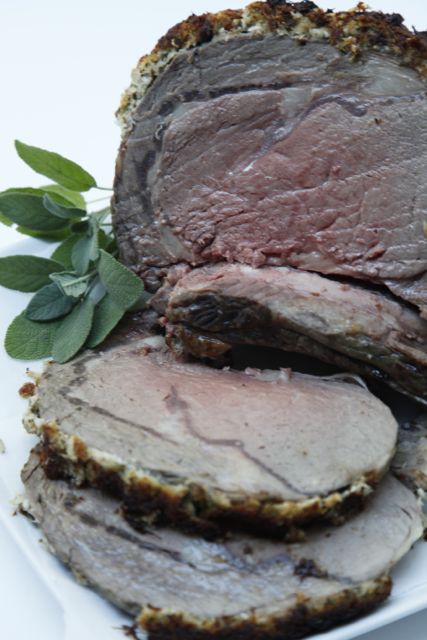 Whether beef, pork, chicken or turkey, roasting foods fill the house with heart warming aromas. Roasting is cooking with love.
Whether beef, pork, chicken or turkey, roasting foods fill the house with heart warming aromas. Roasting is cooking with love.
Roasting is a convenient method of cooking that takes little effort however, there are a few tricks to perfecting a roast that you should know.
First, always work with your butcher. He can advise you about which cut of meat is tender or tough and can help you select the best cut for what you want to achieve. Butchers and bakers are the last form of personal shopping you can do like your grandparents did when they ordered their food from different specialty stores and had it delivered. Shopping back then was a social event and most of the talk was about food and family. It’s a food experience and not a function of buying food.
If you’re familiar with the bone structure of cows and pigs, then you’re already ahead of the game. You’ll know that the most tender cuts of meat lie where there is the least body movement. These cuts do well roasted without liquid.
Meats with the most movement and therefore the most connective tissue will be tougher and demand very slow cooking with moisture. When cooking with liquid, the liquid should never boil. Simmering is the way to go for best results.
To add flavour to a tender cut of meat, rub it with garlic and rosemary. You may want to stud the surface with the seasonings first. Let that sit for the meat to absorb some of the flavours. Remove the garlic before cooking because no one likes the flavour of scorched garlic.
Your butcher can also trim your roast, French a rack of ribs or butterfly a roast for you. One of my favouite winter roasts is Porchetta. Porchetta is a shoulder roast butterflied, seasoned with rosemary and garlic, then rolled and wrapped in pork skin. The butcher does all of this for me and when I get it home, I simply roast it slowly so the skin tenderizes the meat inside. It is delicious.
You should also be familiar with the grades of meat in Canada. This attributes to the cost and quality of the meat, specifically the level of marbling throughout the meat. Prime is the most tender with plenty of marbling, AAA to single A mean a gradual reduction of marbling and a less tender cut of meat.
This weekend, fill your home with the aromas of love and roast something delicious.
Horseradish Crusted Rib Roast
1/4 cup (60 mL) extra virgin olive oil
1 head of garlic, cloves peeled and coarsely chopped
1/2 cup (125 mL) prepared horseradish
3 tablespoons (45 mL) fresh thyme, 3 tablespoons (45 mL)
3 tablespoons (45 mL) fresh rosemary, chopped
3 tablespoons (45 mL) fresh sage, chopped
One 8-pound (3.63 kg) prime rib roast
Salt and freshly ground pepper
Preheat the oven to 550F (280C). In a food processor, combine the olive oil with the garlic, horseradish, thyme, rosemary and sage and process to a paste.
Stand the roast on a rack in a roasting pan. Season generously all over with salt and pepper and set it fatty side up. Spread the horseradish-herb mixture in a thin layer over the top. Transfer to oven and immediately reduce heat to 350F (180C). Bake for 18 to 20 minutes per pound for medium rare. Remove from oven and transfer the roast to a carving board to rest for at least 10 minutes before serving. Serves 8.

